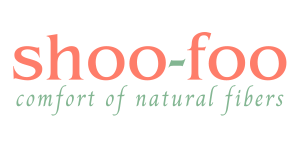Bamboo cellulose, a soft and strong fiber
With the Shoo-Foo bamboo manufacturing process, bamboo is cut by local village people who have been doing this for centuries. Actually, bamboo is like grass, and cutting it properly (yes, it’s a skill!), helps keep the bamboo forest alive. Farmers pile harvest on the side of the road where it will be picked up by the factory workers.
Then, under the effect of a steam system, stems and leaves are isolated and broken into a pulp called “cellulose”. Cellulose is the form of bamboo that can be spun unto thread and then woven into fabrics of all types.

The process of breaking down bamboo into a fibre suitable for making fabric does use N-Methylmorpholine N-oxide (NMMO), which is an organic solvent used since the '90s for converting raw wood fiber into useful textiles. NMMO preserves the natural characteristics of the bamboo cellulose without the use of toxic chemicals.
This organic solvent is relatively easy to be filtered and re-used. The resulting liquid is contained in a “closed-loop” solvent spinning system and recycled at 99.5% to make more bamboo cellulose instead of being leaked into waterways.This is probably the most environmental way of making bamboo fabric, as it also saves both energy and water.
Once the bamboo yarns are made and ready for spinning into threads, bamboo does not require much in the way of scouring, bleaching, shaping or cleaning. In fact, most chemicals and steps used in the cotton process would damage the bamboo yarn anyway.
There is a way to make bamboo using machines and no chemicals, but that process is so costly and so labour intensive, there is hardly anyone using that technology today. But the good news is that technology progresses, and the bamboo manufacturing process is constantly improving.
Cotton and Microfiber production
Before being used in the fabrication of a product cotton, both ‘regular’ and organic, requires several more steps before the thread is ready to be knitted or woven. They first need to be cleaned, sized, softened, bleached, strengthen, smoothed. From cleaning agents to get rid of sticks, ginning machines to remove seeds, oxidizers to bleach away yellow-ness and gas flames to smooth out surface fibers, the process is hefty and much more harsh on the planet in terms of byproduct when compared to bamboo.
What is Lyocell?
The production of lyocell is similar to the process of making bamboo, only it uses wood pulp from hardwood (oak, birch, eucalyptus, among others) as its source instead of bamboo.
Many people refer to the closed-loop process describe above as the “lyocell process“; referring to the technique which produce cellulose fibres from dissolved pulp using a close-loop dry jet-wet spinning process. Lyocell is traditionally made from hardwood logs or chips (often birch or oak) and more recently from eucalyptus, while bamboo is made, well, from bamboo!
Is bamboo manufacturing really a “green” process?

Truth be told, the production of bamboo is one of the most eco-sustainable when compared to the steps involved in the growth, use of resources and manufacturing of other fabrics.
During growth, bamboo has zero impact on the planet. It is a plant that grows naturally with just rain and sun – no land reclaiming, no irrigation and no replanting necessary (bamboo can grow to full maturity within 3 to 4 years, all on it’s own). The plant itself is a natural deterrent to pests, so it requires no pesticides or insecticides. The forests are managed by local communities and harvesting is done without chemicals and without large machinery – it is all mechanical, as it has been done for centuries.
Organic and Eco sustainable

We are proud to say that the bamboo fibres we used for our products have obtained the FSC Chain of Custody Certification – meaning that from the bamboo forest to the fibres, all successive stages of production meet the criteria and rules requested to assure a responsible stewardship of the world’s forests.
We are also proud of using only bamboo crops that are certified organic by the Organic Crop Improvement Association (OCIA), the United States Department of Agriculture (USDA) and Ecocert seals; and healthy by Oeko-Tex Confidence in Textiles.
Why make bamboo textiles in China?
First, the know-how of producing bamboo fabrics has been developed in China and we believe that the best quality in this category of products still comes from China.
Second, the natural resources used to make our products is located in China (up to now, no other countries in the World produce yarns made from cellulose of bamboo). In order to keep our supply chain short and eco-efficient, we’ve decided to handle all the transformation process in China.

